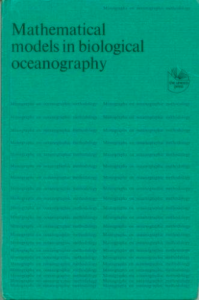Trevor Platt, Kenneth H. Mann
and Robert E. Ulanowicz
(Editors)
The UNESCO Press
1, rue Miollis
75732 Paris Cedex 15
FRANCE
1981/157pp./Cloth/ISBN 92-3-101922-8
 This volume represents the concensus reached by Working Group 59 of UNESCO’s Scientific Committee on Oceanic Research, charged with assessing the utility of mathematical models in biological oceanography.
This volume represents the concensus reached by Working Group 59 of UNESCO’s Scientific Committee on Oceanic Research, charged with assessing the utility of mathematical models in biological oceanography.
The working group reconizes two approaches to modelling biological oceanographic systems: the reductionistic and the holistic. The first of these deals with disticnt processes that are studied in isolation from the total system, in the classical manner of laboratory science.
Such “single- process” models have proven quite efficacious as tools for understanding and predicting focal processes.
There are, however, many questions in biological oceanography that involve the interactions of several processes working simultaneously. Unfortunately, the success of such “coupled- process” models has been nowhere as great as their single- process counterparts, and the Working Group recommends that other methods for quantifying whole ecosystems be explored. Possibly fruitful new directions that are surveyed in this volume include network analyses, thermodynamics, statistical mechanics, particle- size theory, and information theory.
A primary recommendation that underlies all exploratory methods is the insight that “for understanding biological oceanographic systems, it is necessary to have at least as much information on the fluxes [of material and energy] as on the biomasses.” The implications that this advice has for the planning and execution of research programmes include more reliance on scale and dimensional analysis and the statistical design of field programmes.
Available from Amazon.